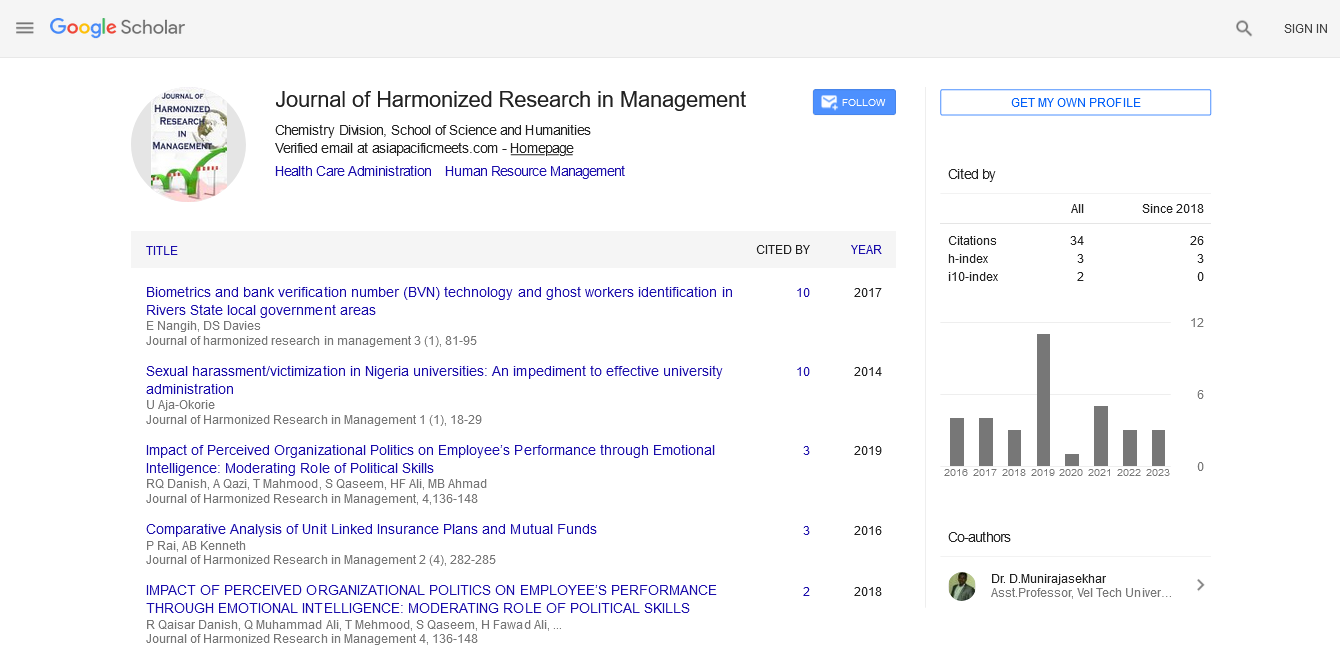Perspective - (2022) Volume 8, Issue 2
CONCEPTS OF MANUFACTURING RESOURCE PLANNING (MRP)
Hena Combie*Received: Sep 01, 2022, Manuscript No. JHRM-22-77713; Editor assigned: Sep 05, 2022, Pre QC No. JHRM-22-77713 (PQ); Reviewed: Sep 19, 2022, QC No. JHRM-22-77713; Revised: Sep 27, 2022, Manuscript No. JHRM-22-77713 (R); Published: Oct 05, 2022, DOI: 10.30876/2354-5384.22.8.129
Description
A system called manufacturing resource planning is used to efficiently plan how a manufacturer will utilise its resources. It enables producers to create an accurate production schedule for the foreseeable future that lowers costs and makes the best use of their available resources. Business organisations employ an integrated information system called Manufacturing Resource Planning II (MRP II). Early Materials Requirement Planning (MRP) systems evolved into Manufacturing Resource Planning (MRP II) by incorporating new data, such as staff and budgetary demands.
The process of developing an MRP system that enables producers to account for the raw materials and human resources required for their manufacturing process is known as manufacturing resource planning II (MRP II). While covering operational and financial planning, MRP II also looks at contingency planning, which opens up new avenues for progress when problems do develop. The idea of “dependent demand,” which refers to the reality that the requirement for a raw material or intermediate component is reliant upon the demand for the finished product, is the foundation of manufacturing resource planning. The demand for materials is determined by the manufacturer’s projection of demand for a certain finished good, which is known as an “independent demand” because it comes from an outside source, usually the customer or a make-to-stock order.
Today, the goal of manufacturing resource planning is frequently associated with Just-In-Time (JIT) scheduling and Just-In-Sequence (JIS) methodologies, which aim to reduce both inventory levels and the amount of time a material spends in storage or stationed nearby the processing equipment it will be used in. Such plans must also make sure there are enough inventories on hand to prevent any shortages or production halts.
The planning team can create plans and schedules in both make-to-order and make-to-stock situations when MRP is carried out on a contemporary APS system. The MRP II programme offers interactive s chedule visualisation, presenting data as stock profile graphs and capacity usage graphs, to enable the viewing of the complete production plan and resource allocation. The master production automatically updates to reflect any changes made to these graphs.
The resource deployments and inventory levels are tracked by MRP II software. Manufacturing resource planning recalculates need and modifies material orders as necessary as materials are consumed or incorporated into completed goods, as demand and orders change, and other factors. Modern industrial resource planning systems also enable producers to investigate “what if” scenarios that enables them to build plans for modifications and contingencies, as opposed to responding to supply or demand changes as they happen.
Manufacturing Resource Planning (MRP II)
Addresses unit-based operational planning, dollar-based finance planning, and what-if analysis using simulation, it consists of a number of interconnected processes, including business planning, production planning (sales and operations planning), master production scheduling, planning for material requirements and planning for capacity requirements, as well as systems for supporting capacity and material execution. Financial reports like the business plan, purchase commitment report, shipping budget, and dollar-based inventory estimates are integrated with the output from these systems. Closing-loop MRP is the precursor to manufacturing resource planning, which is an extension of it.
Closed-loop MRP
A system based on material requirements planning that also incorporates master production scheduling, capacity requirements planning, and production planning (sales and operations planning). The execution procedures are put into action after this planning phase is through and the plans have been determined to be feasible and realistic. These procedures include input-output (capacity) measurement, precise scheduling, and dispatching for production, as well as anticipated delay notifications from the plant and suppliers, supplier scheduling, and other procedures. Closed loop indicates not only that each of these activities is part of the overall system, but also that the execution processes offer input so that the planning is always current.

Google Scholar citation report
Citations : 92
Journal of Harmonized Research in Management received 92 citations as per google scholar report









